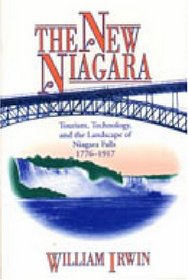Search -
The New Niagara: Tourism, Technology, and the Landscape of Niagara Falls, 1776-1917
The New Niagara Tourism Technology and the Landscape of Niagara Falls 1776-1917
Author:
A surprising account of Niagara Falls’ appeal to Americans as an icon of progress and technology. "The book does a splendid job of highlighting the interconnections among nature, technology, and culture. In addition to its clear prose and well-chosen illustrations, it engages the scholarly literature in a meaningful but understated manner.... more »
Author:
A surprising account of Niagara Falls’ appeal to Americans as an icon of progress and technology. "The book does a splendid job of highlighting the interconnections among nature, technology, and culture. In addition to its clear prose and well-chosen illustrations, it engages the scholarly literature in a meaningful but understated manner.... more »
ISBN-13: 9780271015347
ISBN-10: 0271015349
Publication Date: 4/1996
Pages: 276
Rating: ?
ISBN-10: 0271015349
Publication Date: 4/1996
Pages: 276
Rating: ?
0 stars, based on 0 rating
Publisher: Pennsylvania State University Press
Book Type: Hardcover
Other Versions: Paperback
Members Wishing: 0
Reviews: Amazon | Write a Review
Book Type: Hardcover
Other Versions: Paperback
Members Wishing: 0
Reviews: Amazon | Write a Review
Genres:
- History >> Americas >> Canada >> Province & Local
- History >> Americas >> United States >> General
- History >> Americas >> United States >> State & Local




